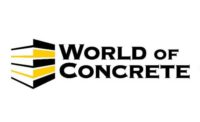Business hates HR – human resources.
Read Fast Company’s 2005 article, “Why we hate HR,”1 and consider these observations:
- Most HR organizations have ghettoized themselves literally to the brink of obsolescence.
- HR people aren’t the sharpest tacks in the box.
- The best and brightest business school grads don’t go into HR.
- HR doesn’t tend to hire a lot of independent thinkers who stand up as moral compasses.
On the ropes
Disdain for HR remains and may have grown in the decade since the Fast Company article. The past year has seen leading business publications including The Wall Street Journal, Forbes, Harvard Business Review, among others, question whether an in-house HR department is necessary anymore. Even mainstream publications such as The Atlantic, May 2015, article, “To do good in the world, get a better HR department” are slamming HR. Technology and out-sourcing may do most of an organization’s mundane HR activities today. HR is on the ropes with business leaders — but how does this impact occupational safety and health?
HR and the OSH function are inextricably linked. As a consultant who visits organizations with no safety pro on staff, I find about 50 percent of the time HR is responsible for OSH. If you’re the sole safety pro in an organization there’s about a 19 percent chance you report through HR; second only to reporting through operations/production at 26%.2 Organizations with 51+ OSH pros on staff have about 7 percent chance of reporting to HR. The better an organization is at addressing safety, the less need for HR.
Six tips to avoid HR’s mistakes
1. Eliminate hazards. Safety is best addressed through the hierarchy of controls where elimination of hazards comes first and training comes last. HR tends to flip hierarchy of controls to focus first on training and next enforce employee use of PPE. To look at this another way, HR sees safety as a focus on controlling unsafe acts through behavior modification — slogans, orders, incentives and discipline. OHS pros should focus control on unsafe conditions, such as are machine guards in place?
2. Take business courses. Interpersonal communications skills and law courses have “extremely high value,” respectively, by 83 percent and 77 percent of the members from the Society for Human Resource Management (SHRM). Only about 35 percent of SHRM members believe business management courses, and 2 percent for finances courses, have high value. OSH pros should take courses that train them on business management and finance.
3. Promote strategic vision. HR managers focus on “administrivia” that bog people down with bureaucratic hassles.3 A focus on OSHA compliance may yield the similar effects. OSH pros should promote a strategic vision such as business conformance with the upcoming ISO 45001 health and safety management standard that complement business objectives. OSH must be managed as an integral component of business similar to quality and production.
4. Promote the OSH profession. Anyone can call themselves an HR manager. People don’t need a degree to be an HR manager. HR managers are not required to adhere to a professional code of conduct. HR is an occupation, not a profession. The same can be said about safety. OSH is trying to become a profession, however. First steps include holding a degree in the field and acquiring certification — CSP and CIH — that enforces a code of conduct.
5. Supervise first, boss last. The July-August 2015 Harvard Business Review points out that “…no other group in organizational life… bosses us around as systematically as HR does.” HR has often zero tolerance for what they perceive as offenses from proper business conduct. About one-half of OSH pros directly supervise other staff. A good supervisor can achieve harmony among a very diverse work team and meet business objectives.
6. Don’t discount HR. HR is taking a lot punches but it remains a heavyweight contender for organizational influence. SHRM represents more than 275,000 members and has a budget more than $100 million. Since 2009, SHRM has spearheaded a couple of first-ever HR standards from ANSI (2012 cost-per-hire standard) and an ISO standard (ISO/DIS 30405 on HR management is being developed). SHRM and similar organizations, promote HR certifications, such as SHRM Senior Certified Professional. SHRM’s size and budget easily dwarfs ASSE, with only about 33,000 members. Numbers, both in people and dollars, sway policy.
Future of HR and safety
HR and safety battle for ownership of changing laws. For example, whenever one hears “reasonable accommodation” coming from ADA-type laws it really means “reasonable safety accommodation.”
More than ever safety is being reinterpreted for older workers, pregnant workers, non-English speaking workers, disabled workers and other workers such as millennials. Where OSHA regulatory compliance stops, employer best practices, however defined, moves on.
The bright line between HR and safety continues to fade. OSHA recently issued a directive on what gender may use bathrooms, for example. But gender identity at the workplace has a huge HR component.
Whose turf is workplace violence, wellness, or security? Whose domain is psychological stress? If an office is too hot or too cold, or if someone’s cologne or perfume is too strong, is this more of a safety or HR issue? Or can supervisors solve the problem without HR or safety involvement?
Teamwork
HR and safety both have people-centric functions. Both need each other. OSH pros should take the lead with emerging HR/OSH crossover issues. But OSH pros must be viewed by the C-suite as capable leaders. HR is distained for lack of business acumen and vision. Technical proficiency is an OSH imperative but equally so is a business mind.
References
1. http://www.fastcompany.com/53319/why-we-hate-hr
2. http://www.asse.org/assets/1/7/findings_new.pdf
3. https://hbr.org/2015/07/why-we-love-to-hate-hr-and-what-hr-can-do-about-it



